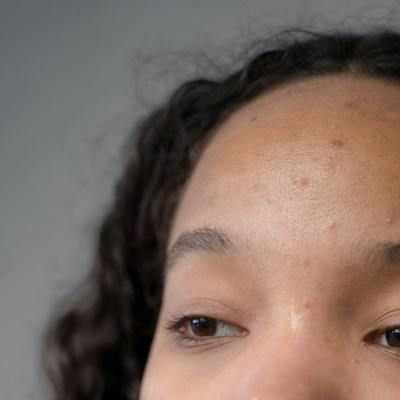Triple-Combination Acne Treatment Gel Effective, Well-Tolerated Among Patients
The treatment, made up of clindamycin phosphate, adapalene, and benzoyl peroxide, led to clear or almost clear skin among a significant number of individuals with acne.
Credit: Pexels

A newly-developed, triple-combination therapy made up of clindamycin phosphate 1.2%/adapalene 0.15%/benzoyl peroxide (BPO) 3.1% gel is both well tolerated and effective among individuals with moderate-to-severe acne, according to recent findings, with rates of almost clear or clear skin not seen in other topical acne treatments.1
These findings represented the conclusion of a new pooling of recent data on the triple combination (CAB) acne therapy and the research was led by Leon H. Kircik, of the Icahn School of Medicine at Mount Sinai, New York. The investigators noted prior phase 2 and phase 3 studies had demonstrated successful results in patients skin conditions following CAB treatment.2,3
“Across all three clinical studies, acne lesions were reduced by > 70% and approximately 50% of CAB-treated participants achieved treatment success,” Kircik and colleagues wrote. “In this manuscript, data from the phase 3 studies were pooled to more robustly examine the efficacy, quality of life impacts, safety, and tolerability of CAB gel in participants with moderate-to-severe acne.”
Background and Methods
The investigators briefly highlighted the methodology and design of the phase 3 studies, which they noted had been outlined in depth previously. Study participants had been in the age range of 9 years and older and all had moderate to severe facial acne.
The research team highlighted the specific criteria for subjects’ inflammatory and noninflammatory facial lesions, with ≥ 30 to ≤ 100 of the former and ≥ 35 to ≤ 150 of the latter. Additionally, the team included patients that had ≤ 2 facial nodules. Subjects taking part in the research were randomly assigned 2:1 to be given either CAB or a vehicle gel at a once-per-day rate for a total of 12 weeks.
The investigators provided supplementary skincare products for the purposes of patients being able to moisturize, cleanse, and protect their skin from the sun. The team carried out evaluations at various intervals, including the point of participant screening, baseline, and the 2, 4, 8, and 12-week mark.
The research team did evaluations of CAB’s efficacy which involved reporting on lesion counts as well as their criteria for treatment success, defined based upon reductions in facial Evaluator’s Global Severity Score (EGSS) as well as specific scores suggesting the presence of clear or nearly clear skin.
Participants also were given the Acne-Specific Quality of Life (Acne-QoL) questionnaire to fill out at the point of baseline and at the 12-week mark. The questionnaire involved coverage of domains related to self-perception, emotional and social roles, and acne symptoms, with score improvements indicating enhanced quality of life.
Subjects were instructed to report tolerability issues such as pruritus and burning on a graded scale. Additionally, the research team conducted safety assessments aimed at recording cutaneous reactions.
The team also focused on recording adverse events (AEs) continuously, monitoring AEs throughout the periods of study.
Findings
By the conclusion of the 12-week study period, the investigators found that 50.0% of the study participants were shown to have successful outcomes following their CAB treatment course. This contrasted with the 22.6% observed among those given the vehicle gel, demonstrating there was a statistically significant difference (P < .001).
Treatment with CAB was shown by the research team to have led to reductions of over 70% in both inflammatory and noninflammatory lesions by the 12-week mark (77.9% and 73.0%, respectively). These rates were noted by the team as being substantially higher than those of the vehicle arm (57.9% and 48.2%, respectively; P < .001 for both).
Among the notable treatment-emergent adverse events (TEAEs), the most common ones were found by the investigators mild to moderate in their severity. Additionally, the team found that less than 3% of subjects in the treatment arm discontinued due to AEs.
The investigators reported that there had been temporary increases in erythema, scaling, burning, itching, and stinging among those treated with CAB compared to their same levels at baseline. Despite this finding, the team noted that such effects had mostly resolved by the 12-week mark or returned to levels close to those at baseline.
“These data demonstrate that CAB gel—the first fixed-dose, triple-combination topical treatment for acne—may be an effective treatment option for children, adolescents, and adults with moderate-to-severe acne,” they wrote.
References
- Kircik, L.H., Stein Gold, L., Gold, M. et al. Triple Combination Clindamycin Phosphate 1.2%/Adapalene 0.15%/Benzoyl Peroxide 3.1% for Acne: Efficacy and Safety from a Pooled Phase 3 Analysis. Dermatol Ther (Heidelb) (2024). https://doi.org/10.1007/s13555-024-01155-7.
- Stein Gold L, Baldwin H, Kircik LH, et al. Efficacy and safety of a fixed-dose clindamycin phosphate 1.2%, benzoyl peroxide 3.1%, and adapalene 0.15% gel for moderate-to-severe acne: a randomized phase II study of the first triple-combination drug. Am J Clin Dermatol. 2022;23(1):93–104.
- Stein Gold L, Lain E, Del Rosso JQ, et al. Clindamycin phosphate 1.2%/adapalene 0.15%/benzoyl peroxide 3.1% gel for moderate-to-severe acne: efficacy and safety results from two randomized phase 3 trials. J Am Acad Dermatol. 2023;89(5):927–35.